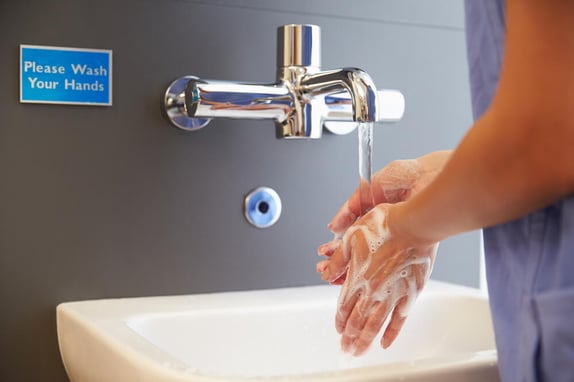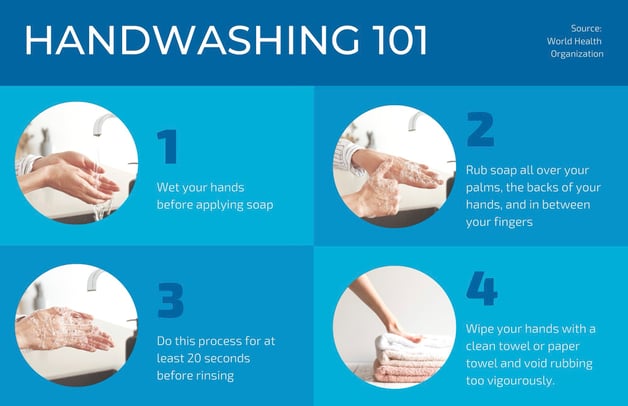Excellent hand hygiene is a non-negotiable for healthcare facilities. It’s vital to keep patients, staff, and visitors safe. But sustaining a high level of compliance is easier said than done.

Even with audits and “secret shoppers” (certified hand hygiene managers that track compliance) in place, instilling a culture of hand hygiene at your hospital is challenging. You need a commitment from all of your leaders and a collective effort from all of your departments.
To help you build that culture, here are six creative ways to improve hand hygiene compliance at your hospital.
1. Interdepartmental Competitions
Quarterly competitions between departments are a fun and effective way to improve hand hygiene compliance at your hospital. Healthy competition helps get everybody engaged: people want to win, and the people who want to win the most become motivated to hold others on their team accountable.
Start by collecting the audits from your certified hand hygiene managers, who observe and record how well teams are adhering to the proper hand hygiene practices. At the end of each month, report who’s leading the competition based on compliance percentage and then announce a winner at the end of each quarter. Make sure you give the winners a popular reward that keeps teams motivated.
You’ll find that teams find ways to hold themselves accountable, and the entire attitude towards hand hygiene at your hospital will become fun and urgent.
2. Electronic Message Boards (EMBs)
Using digital screen displays (known as electronic message boards) across your facility can be an effective way to relay vital information to all staff in your hospital.
.jpg?width=549&height=366&name=IMG_5045%20(1).jpg)
At HHS, all of our hospital environmental services teams use an EMB to display daily safety reminders, important company updates, and other news and information. We also regularly include reminders about the importance of hand hygiene.
You can also track and display your interdepartmental competition results for an extra kick of motivation.
3. Signage
Putting up flyers or posters is a quick and easy step to make an immediate difference.
Some great places to post signage include bathrooms, nurses’ stations, hand sanitizing stations, or anywhere someone enters or exits a room or department.
If you need some posters to hang, check out this resource from Becker’s Hospital Review that lists 10 hand hygiene posters you can use in your facility.
You can also download this free handwashing 101 poster we've created for you.

4. Make It a Part of Your Rounding
Whenever you’re rounding your hospital, make a habit of reminding your team members to practice good hand hygiene. This is a small change, but encouraging habit-forming behavior will help instill proper hand hygiene practices into your hospital’s culture.
5. Mention It in Every Single Huddle and Meeting
Make a point to mention hand hygiene in every huddle or meeting with team members or department leaders. If you’re having a competition, it’s a great time to acknowledge monthly and quarterly winners. You can present them with a coveted trophy or reward to bring in that competitive spirit and get more people engaged.
6. Include Checking Sanitizer Expiration Dates on Your Environment of Care Rounds Checklists
Though this doesn’t directly impact hand hygiene compliance, it’s crucial for reducing healthcare-associated infections (HAIs).
Expiration often happens in low-traffic areas. Including sanitizer checks in your Environment of Care (EOC) rounds will ensure every station is in compliance.
Tip: Print the expiration date on a label and place it on the outside of the bag or dispenser. That way, it’s easy to see and makes it more likely that team members will notice when it’s expired.
Improving your hand hygiene compliance requires a cultural shift that results in behavior modification. These tips are great ways to get started, but it’s important to remember it takes a committed effort across your organization to start seeing significant results.

